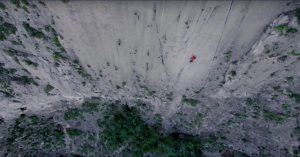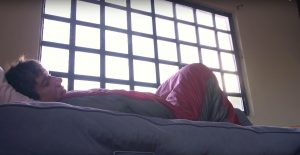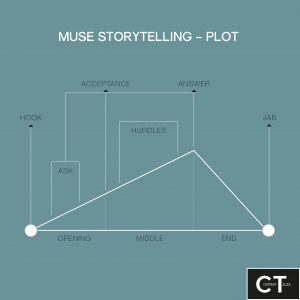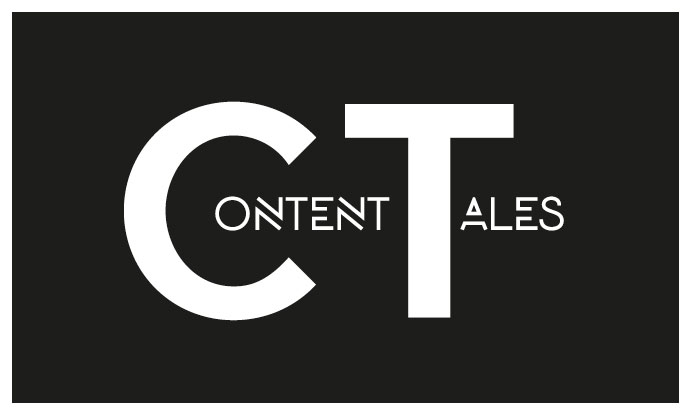READING TIME: 8 MINUTES
Many communications experts and marketing enthusiasts speak about brand storytelling. It seems to be the solution for every communication problem and the core of every content strategy. But knowing the brand storytelling game, is more than just being familiar with the dramatic arc. In this storytelling guide I’d like to share all my “secret” recipes with you. There is even a little science-related part, explaining the processes of our brains during we receive a story. In short: This guide will make you a brand storytelling expert.
Some of the big global brands around the world really got the point and embraced the power of storytelling as a top-of-the-funnel awareness tactic. By doing so they systematically nurture their online sales funnels with engaged and emotionally connected users. With the help of different storytelling techniques, they put their audiences into a state of mind, where their Cortisol and Oxytocin levels are significantly raised. This consequently leads to an increased willingness to buy. Pure science, ladies and gentleman.
Neuroscience and storytelling
Neuroeconomist Paul J. Zack did extensive research in order to understand the impact of brand storytelling. He studied the neurological processes of people, who were shown a movie about a father and his son. The son suffered from brain cancer and had only a few months left to live. The father heavily struggled with his son’s destiny, but somehow needed to deal with the painful situation. Watching this emotional story made people feel two major emotions: distress and empathy. And now we get to the probably most interesting part of this storytelling guide:
In addition to asking the audience about their feelings, the research team around Paul J. Zack analyzed the blood of people before and after they have watched the video. Results showed an increased level of the two hormones Oxytocin (produced due to feeling empathy) and Cortisol (produced due to feeling distressed). Cortisol is always produced when people need to pay attention to something important, whereas Oxytocin is produced, whenever people experience connection, care and empathy. Within further experiments, the same team was able to prove that the people’s willingness to buy, increased with the level of Oxytocin and Cortisol in their blood.
Usually the two hormones Oxytocin and Cortisol are produced at certain points of a story. Oxytocin is produced at both, the beginning and end of a story, where the audience feels connected to the main act mostly (empathy). Cortisol however is increasingly produced before and after the climax (in the middle of a story), where the main character has to deal with hurdles and obstacles in order to achieve his goals.
Those insights are highly relevant in order to proof the economic relevance of well-crafted stories within the marketing mix of brands. They need to be considered in every content strategy and whenever a story is developed. Now that you know how important storytelling is from a neuroeconomic standpoint, let’s now learn how to systematically tell such impactful stories.
Here are a Ted Talk of Paul J. Zack and another short video in which he explains the conducted study:
Research object of our storytelling guide
This storytelling guide analyzes a video, realized by the very well known outdoor brand “The North Face”. It’s called “El Sendero Luminoso”. In my opinion it’s a real masterpiece in terms of brand storytelling and content marketing. It earned around 5.4 Million views within a really tiny niche market (rock climbers). This story is a very good example and research object in order to understand the storytelling process.
I’m going to cut the story into pieces in order to understand why it works out so well. My analysis is based on the Muse storytelling technique – a recognized approach amongst established storytellers. It will give you insights on how the concept of a story basically works and what its most crucial factors are. If you stick to the presented process and keep the key factors in mind, your own storytelling masterpiece is just around the corner.
Before understanding and diving into the structure of the featured story, it’s obvious to watch it first. So here we go:
Storytelling key factors
According to Muse, there are 4 crucial factors for a good story – they are the basis of this storytelling guide:
- people
- places
- purpose
- plot
In short: PPPP. The examination of these story key drivers is done separately and stepwise. So let’s start with the people first – in this case, with the main character and climber Alex Honnold.
PEOPLE
For every storytelling / brand storytelling project it’s crucial to first ask yourself, which person the heart of the story is. The main character needs to be chosen wisely as he works as the story’s emotional driving factor and guiding thread. Crafting a story’s central character perfectly works out by defining his three main qualities: desire, complexity and uniqueness.
- Desire: It’s what a human being drives from the bottom of it’s heart. The stronger this urge is, the more likely it is that the audience keeps watching.
- Complexity: Gives insights regarding the motives behind a character’s desire. The complexity of a character is crucial for its strong identification and connection with the audience.
- Uniqueness: It’s the uniqueness of a character that makes him stand out from the rest. The main character needs to have attributes that are described as new, different, interesting and unconventional. There needs to be a reason why a certain actor takes the main role.
Developing a main character on the three described qualities works best by conducting a lot of interviews and doing detailed research. Speaking with the character himself, his family, friends and colleagues is key for a well-defined main act.
In case of this storytelling guide’s research object, Alex Honnold’s qualities can be described as follows:
- Desire: Alex Honnold inevitably strives for experiencing ultimate and immediate freedom as well as total exposure.
- Complexity: Alex perfectly masters the interplay between tension and relaxation, security and uncertainty, focus and mental freedom.
- Uniqueness: Nobody else on this planet balances his body, mind and fears as well as Alex Honnold does. He completely owns every fraction of a second, when he’s on the rock.
In most stories there is more than just one character. Defining also supporting actors by using the same scheme (desire, complexity, uniqueness), perfectly makes sense in order to get the whole picture of how all characters relate to each other.
PLACES
Staging the main characters at the right places, is a balancing act and crucial for each story. According to Muse’s claim “show don’t tell”, it’s important that the selection of a story’s places is done with the character’s qualities in mind. It’s the aim to choose places, which emphasize on the attributes and also oddities of the main act.
When it comes to brand storytelling this often is a difficult thing, because authenticity is an essential factor at this point. Staging a testimonial at a point of sale or a generic environment, doesn’t contribute to a strong story. It’s important however to choose places, where the character feels a deep connection to his surroundings. Only at such places, he’s able to find his true identity and behaves in an authentic way.
It’s also important to properly stage different places. It’s a huge difference, if a place is shown during sunrise, or at night, if a scene is bright or dark. if a room is neat and tidy or a complete mess. For large productions, a set designer and lighting engineer therefor definitely pay off.
Next step of our storytelling guide: Answer, what the key places of the video with Alex Honnold are.
Establisher shot at 00:32: Alex on the rock, without a rope and hundreds of meters up in the air.
This scene is the ultimate hook of the story. Make sure that every video you’re going to produce has such a strong establisher shot. Especially in social media, the audience’s attention will be immediately gone otherwise (attention span < 5 sec.)

The pan shot at 1:17 stages the local graveyard and emphasizes on the danger of Alex’s project.
This is a very strong shot right at the beginning of the short movie. It addresses the fatal consequences, the sport of free soloing could have. The voiceover in the background (a friend of Alex) says: “It’s just kinda wired helping a friend do something, that you know could potentially lead to his death.” Goosebumps guaranteed.

Alex in the sleeping bag, already awake and highly focused. His legs are bent (tension); the metal grid in front of the window symbolizes his structured thoughts. 02:49

Alex on the wall after climbing the crux. He’s full of joy and gratitude, the love for what he does is reflected on his face. 05:28

PURPOSE
To put it simply, the purpose of a story is the added value for someone who watched it, read it or listened to it. It’s the things you want the audience to learn from it. In the case of our brand storytelling example, I would describe the purpose / key learning as follows:
“To achieve great things, risk is essential to a certain degree. Passion is the fuel, which keeps the motor of success running. When it comes to extreme sports, pushing boundaries, a clear focus and freed mind as well as absolute self-control are essential.”
PLOT
What would be a storytelling guide without explaining the plot. Latter is the structure of a story and more than just a chronological narration of facts. According to Muse there are six key factors that a strong plot always needs to contain:
- The already described hook: It catches the audience by awakening interest or proposing a question. A hook only works with strong and fascinating imagery
- The hook of our video: A climber hundreds of meters up in the air without a rope, staged from a stunning perspective
- An ask: The ask builds the basis for the goals of the main character and stands for the “hero’s” deepest urge
- The main ask in our video: Can I (Alex) go “the next step in technical climbing” and do the world’s hardest free solo climb without dying?
- An acceptance: The acceptance is an explanation, how the main character tries to achieve a certain goal and why he’s able to do so. It’s something like the master plan or mission of the main actor
- The acceptance in our video: With insanely lot of training (“bunch of training”), conviction and perfect preparation everything is possible for Alex
- An answer: The answer is the way how the main character pursues his goal
- The answer in our video: Just do it! Alex is fed up of hanging around and excited to finally give it a try (there is only one try)
- Hurdles: Obstacles are the salt in every story and ensure excitement. They keep the audience watching, reading and listening.
- Hurdles in our video: high difficulty of the climb, suboptimal conditions (loose and wet rock), fear and reverence of Alex
- A Jab: The jab is the bottom line of a story and based on a certain learning
- The jab of our video: Pushing boundaries in extreme sports is possible due to mental focus, an iron will and absolute self control

We’re at the end of this storytelling guide, which hopefully provided you with the most important basics of brand storytelling. The described procedure works out for storytellers in every business, whether it’s print journalism, video direction or radio. You enjoyed this article and always want to stay updated, whenever some more food for thought is released? Please subscribe to my newsletter below, drop me a comment and share this post with your friends via social media.
Side note: For a good story also proper texting technique is essential. This post from a friend of mine sums up the most important points for you.




Im an English IV teacher in this life, but a director of ops and development for a transportation training company in the former. Brand building through illustrations with simple, yet powerful plots was and is a master key to penetrating a fickle conaumer. So thanks for acknowledging the art.